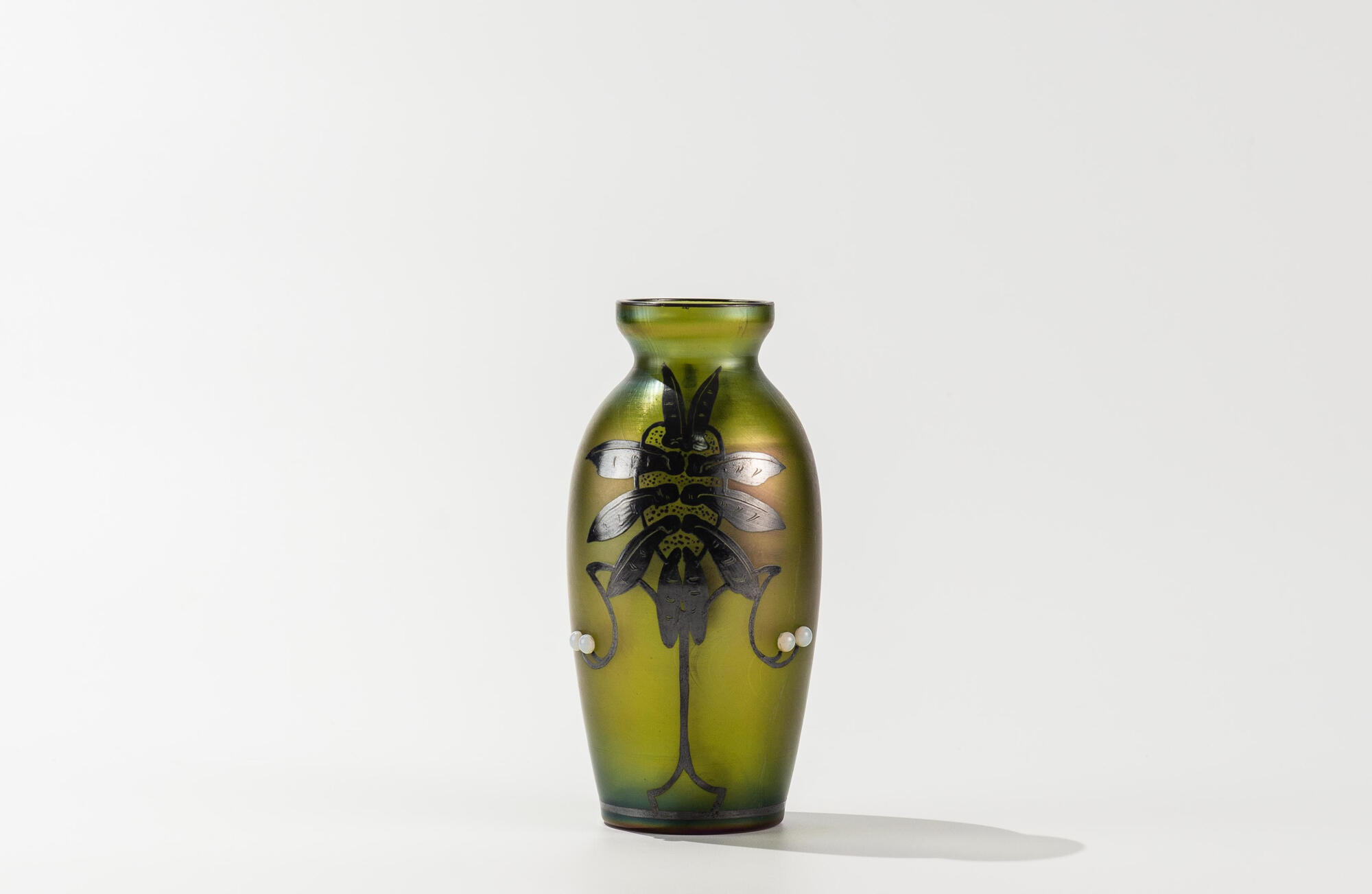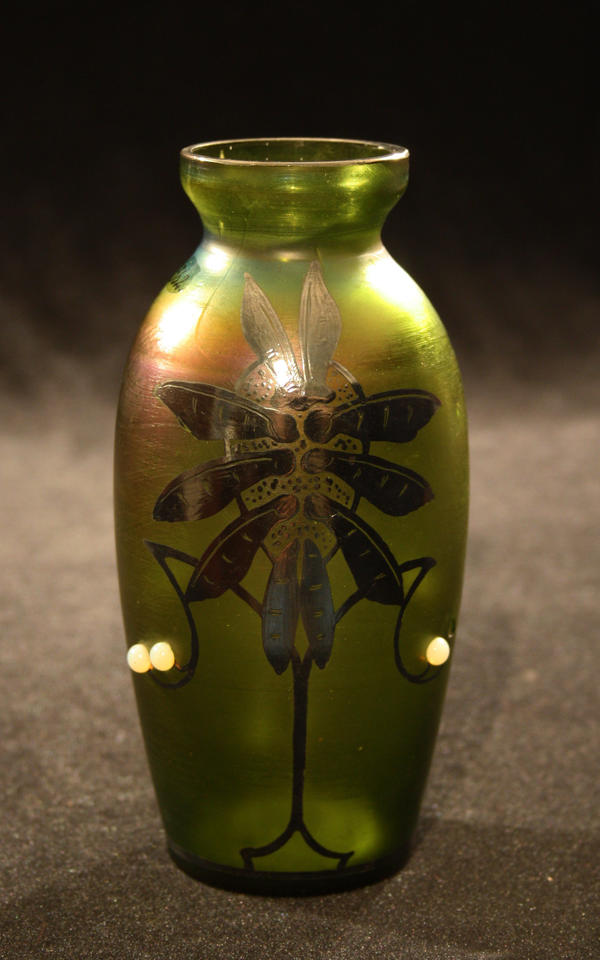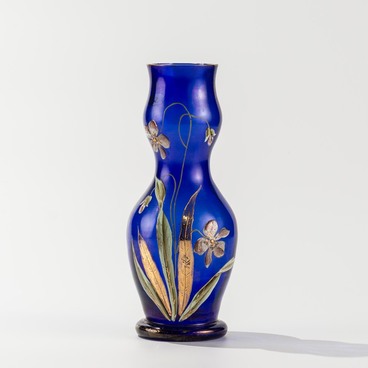Art Nouveau is an art style of architecture, applied and decorative arts, and fine arts that was popular in the last decade of the 19th century and the early 20th century until World War I. This style was characterized by abandoning straight lines and corners in favor of more natural lines, as well as an interest in new technologies (for example, in architecture), and a heyday of applied art.
With its flowing lines and wavy natural patterns, the Art Nouveau style resonated with glass art. Art Nouveau craftsmen strove to combine the artistic and practical aspects of their products, to add beauty to all areas of human activity, and to adhere to the principle of “transforming life through art”. By doing so, they followed in the footsteps of the representatives of Romanticism and Symbolism. During that period, numerous glass and crystal items were produced in the Art Nouveau style.
At the turn of the 20th century, the Dyatkovo Crystal Factory created numerous products in this style. Many of them are displayed in the exhibition hall dedicated to 19th-century art.
One of them is the small ovoid-shaped flower vase. In the middle part of the vase, there are moldings — beads made of white (milky) glass. Milky glass is white glass that is partially or completely opaque. It resembles porcelain and is created using fluorine and phosphorus compounds. In the historical records of Russian factories, such glass was sometimes called “bone matter” because the opaque color was obtained by adding bone meal to the mixture for preparing glass.
The outer surface of the vase is decorated using the iridizing method. This is a simple and inexpensive method of decorating the glass surface by creating a rainbow-like effect. It is achieved by fuming heated glass with the salts of certain metals which form an iridescent film of the oxides of such metals on the glass surface. Most often, tin, bismuth, titanium, barium, and strontium salts are used. The film connects to the glass surface, it is waterproof and wearproof.
With its flowing lines and wavy natural patterns, the Art Nouveau style resonated with glass art. Art Nouveau craftsmen strove to combine the artistic and practical aspects of their products, to add beauty to all areas of human activity, and to adhere to the principle of “transforming life through art”. By doing so, they followed in the footsteps of the representatives of Romanticism and Symbolism. During that period, numerous glass and crystal items were produced in the Art Nouveau style.
At the turn of the 20th century, the Dyatkovo Crystal Factory created numerous products in this style. Many of them are displayed in the exhibition hall dedicated to 19th-century art.
One of them is the small ovoid-shaped flower vase. In the middle part of the vase, there are moldings — beads made of white (milky) glass. Milky glass is white glass that is partially or completely opaque. It resembles porcelain and is created using fluorine and phosphorus compounds. In the historical records of Russian factories, such glass was sometimes called “bone matter” because the opaque color was obtained by adding bone meal to the mixture for preparing glass.
The outer surface of the vase is decorated using the iridizing method. This is a simple and inexpensive method of decorating the glass surface by creating a rainbow-like effect. It is achieved by fuming heated glass with the salts of certain metals which form an iridescent film of the oxides of such metals on the glass surface. Most often, tin, bismuth, titanium, barium, and strontium salts are used. The film connects to the glass surface, it is waterproof and wearproof.



